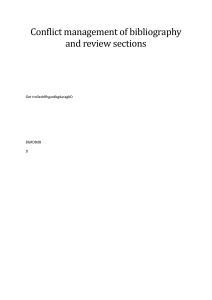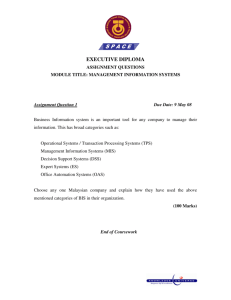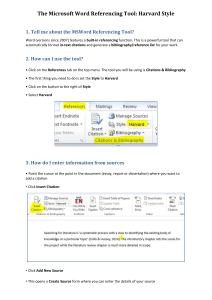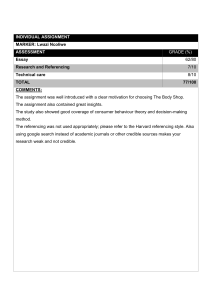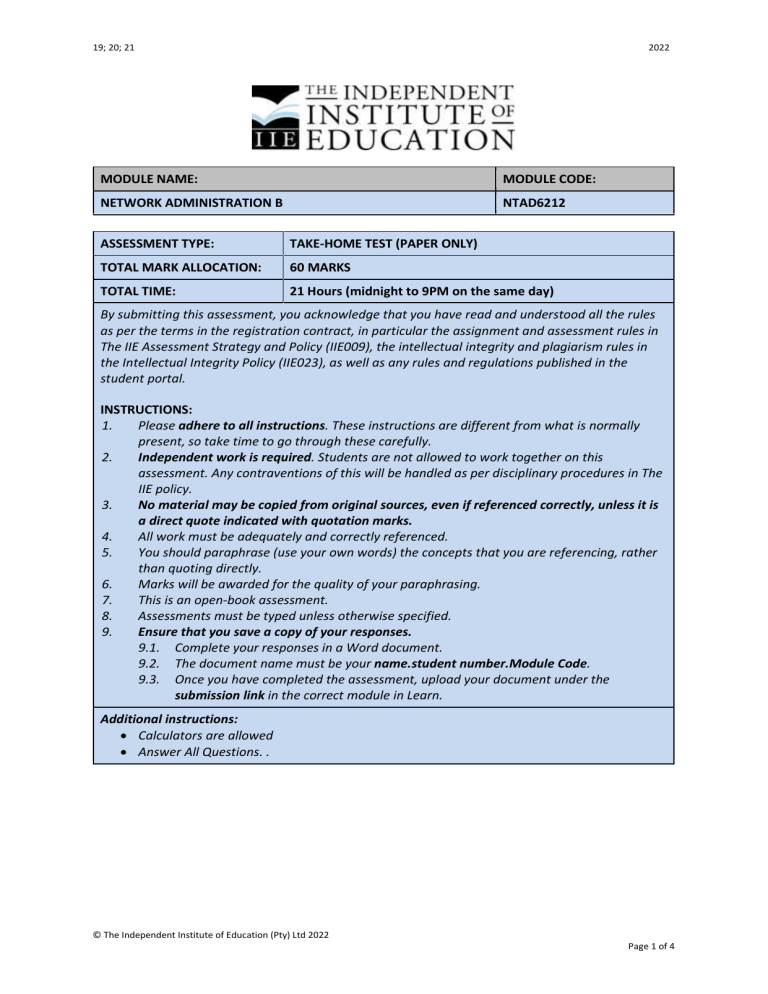
19; 20; 21 2022 MODULE NAME: MODULE CODE: NETWORK ADMINISTRATION B NTAD6212 ASSESSMENT TYPE: TAKE-HOME TEST (PAPER ONLY) TOTAL MARK ALLOCATION: 60 MARKS TOTAL TIME: 21 Hours (midnight to 9PM on the same day) By submitting this assessment, you acknowledge that you have read and understood all the rules as per the terms in the registration contract, in particular the assignment and assessment rules in The IIE Assessment Strategy and Policy (IIE009), the intellectual integrity and plagiarism rules in the Intellectual Integrity Policy (IIE023), as well as any rules and regulations published in the student portal. INSTRUCTIONS: 1. Please adhere to all instructions. These instructions are different from what is normally present, so take time to go through these carefully. 2. Independent work is required. Students are not allowed to work together on this assessment. Any contraventions of this will be handled as per disciplinary procedures in The IIE policy. 3. No material may be copied from original sources, even if referenced correctly, unless it is a direct quote indicated with quotation marks. 4. All work must be adequately and correctly referenced. 5. You should paraphrase (use your own words) the concepts that you are referencing, rather than quoting directly. 6. Marks will be awarded for the quality of your paraphrasing. 7. This is an open-book assessment. 8. Assessments must be typed unless otherwise specified. 9. Ensure that you save a copy of your responses. 9.1. Complete your responses in a Word document. 9.2. The document name must be your name.student number.Module Code. 9.3. Once you have completed the assessment, upload your document under the submission link in the correct module in Learn. Additional instructions: • Calculators are allowed • Answer All Questions. . © The Independent Institute of Education (Pty) Ltd 2022 Page 1 of 4 19; 20; 21 2022 Referencing Rubric Providing evidence based on valid and referenced academic sources is a fundamental educational principle and the cornerstone of highquality academic work. Hence, The IIE considers it essential to develop the referencing skills of our students in our commitment to achieve high academic standards. Part of achieving these high standards is referencing in a way that is consistent, technically correct and congruent. This is not plagiarism, which is handled differently. Poor quality formatting in your referencing will result in a penalty of a maximum of ten percent being deducted from the percentage awarded, according to the following guidelines. Please note, however, that evidence of plagiarism in the form of copied or uncited work (not referenced), absent reference lists, or exceptionally poor referencing, may result in action being taken in accordance with The IIE’s Intellectual Integrity Policy (0023). Required: Technically correct referencing style Consistency • The same referencing format has been used for all in-text references and in the bibliography/reference list. Technical correctness • Referencing format is technically correct throughout the submission. • Position of the reference: a reference is directly associated with every concept or idea. • For example, quotation marks, page numbers, years, etc. are applied correctly, sources in the bibliography/reference list are correctly presented. Congruence between in-text referencing and bibliography/ reference list • All sources are accurately reflected and are all accurately included in the bibliography/ reference list. In summary: the recording of references is accurate and complete. Markers are required to provide feedback to students by indicating (circling/underlining) the information that best describes the student’s work. Minor technical referencing errors: 5% deduction from the overall percentage – the student’s work contains five or more errors listed in the minor error’s column in the table below. Major technical referencing errors: 10% deduction from the overall percentage – the student’s work contains five or more errors listed in the major error’s column in the table below. If both minor and major errors are indicated, then 10% only (and not 5% or 15%) is deducted from the overall percentage. The examples provided below are not exhaustive but are provided to illustrate the error Minor errors in technical correctness of referencing style Deduct 5% from percentage awarded Minor inconsistencies. • The referencing style is generally consistent, but there are one or two changes in the format of in-text referencing and/or in the bibliography. • For example, page numbers for direct quotes (in-text) have been provided for one source, but not in another instance. Two book chapters (bibliography) have been referenced in the bibliography in two different formats. Generally, technically correct with some minor errors. • The correct referencing format has been consistently used, but there are one or two errors. • Concepts and ideas are typically referenced, but a reference is missing from one small section of the work. • Position of the references: references are only given at the beginning or end of every paragraph. • For example, the student has incorrectly presented direct quotes (in-text) and/or book chapters (bibliography/reference list). Generally, congruence between the in-text referencing and the bibliography/ reference list with one or two errors. • There is largely a match between the sources presented in-text and the bibliography. • For example, a source appears in the text, but not in the bibliography/ reference list or vice versa. In summary, at least 80% of the sources are correctly reflected and included in a reference list. Major errors in technical correctness of referencing style Deduct 10% from percentage awarded Major inconsistencies. • Poor and inconsistent referencing style used intext and/or in the bibliography/ reference list. • Multiple formats for the same type of referencing have been used. • For example, the format for direct quotes (in-text) and/or book chapters (bibliography/ reference list) is different across multiple instances. Technically incorrect. • The referencing format is incorrect. • Concepts and ideas are typically referenced, but a reference is missing from small sections of the work. • Position of the references: references are only given at the beginning or end of large sections of work. • For example, incorrect author information is provided, no year of publication is provided, quotation marks and/or page numbers for direct quotes missing, page numbers are provided for paraphrased material, the incorrect punctuation is used (in-text); the bibliography/reference list is not in alphabetical order, the incorrect format for a book chapter/journal article is used, information is missing e.g. no place of publication had been provided (bibliography); repeated sources on the reference list. A lack of congruence between the in-text referencing and the bibliography. • No relationship/several incongruencies between referencing and the the in-text bibliography/reference list. • For example, sources are included in-text, but not in the bibliography and vice versa, a link, rather than the actual reference is provided in the bibliography. In summary, at least 60% of the sources are incorrectly reflected and/or not included in reference list. Overall Feedback about the consistency, technical correctness and congruence between in-text referencing and bibliography: ........................................................................................................................................................................................................................................................................................ ........................................................................................................................................................................................................................................................................................ . © The Independent Institute of Education (Pty) Ltd 2022 Page 2 of 4 19; 20; 21 2022 Question 1 Q.1.1 (Marks: 30) Using suitable examples, explain how the features below make the Active Directory (10) highly flexible directory service. Q.1.2 A. Scalability; B. Flexibility; C. Hierarchical organisation; D. Policy-base administration. Use practical examples to discuss the role and importance of each of the following (10) terms in a forest(s). A. Directory partitions. B. Operations master roles. C. Global catalog. Q.1.3 Using a diagram consisting of four Domain Controllers (DC1 to DC4) all located in (10) Site 1, explain what a replication topology is and then describe how Active directory replications work. Question 2 Q.2.1 (Marks: 30) List four tasks that can be delegated using Organisational Unit (OU) delegation (4) control. Q.2.2 The following are permissions and rights assignments possible for different (10) group scopes: A. Resources on any DC or member computer in the domain. B. Domain local groups in the Builtin folder can be added to DALs only on DCs, not on member computers. C. Resources on any DC or member computer in any domain in the forest or trusted domains in another forest. © The Independent Institute of Education (Pty) Ltd 2022 Page 3 of 4 19; 20; 21 2022 List three types of group scopes and then choose from above (all that apply) the permissions and rights assignments associated with each group scope type. NB: Write only the name of the group scope and then the letter or letters applicable. The answer must be correct to be awarded full marks for the selection. No guessing allowed. Q.2.3 Use an example to describe how a Password Setting Object (PSO) is created and (10) used. Q.2.4 Differentiate between the managed service accounts (MSA) and the group (6) managed service account (gMSA). END OF PAPER © The Independent Institute of Education (Pty) Ltd 2022 Page 4 of 4
